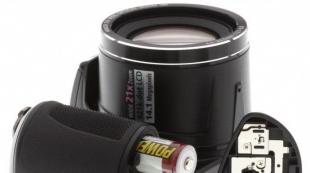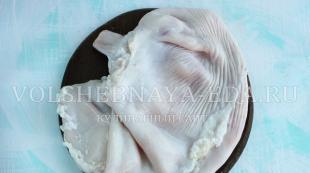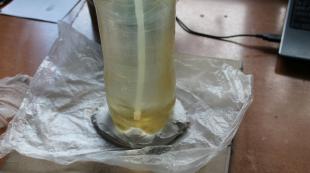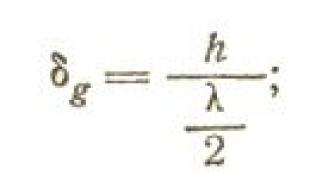Fungicides are chemicals used to control fungal plant diseases. List of drugs, instructions for use, reviews
The modern agricultural chemistry market offers a large number of all kinds of drugs for the prevention and treatment of plant diseases that have already arisen. As they say, for every taste and color. However, it is not so easy to rid the garden and garden of bacteriological problems. It is not enough to select the names of fungicides from the list and purchase them. It is necessary to correctly calculate how they will act and how well they will work against a particular disease. Let's take a closer look what are contact and systemic fungicides for plants.
The drug Maxim (the commercial name of the fungicide) and the like can be purchased independently and treated with seeds and bulbs immediately before planting in the ground.
Names of fungicides
Contact fungicides for plants These are preventive drugs. They protect very well, but usually cannot heal and show poor results if an infection has occurred. Therefore, they are used as early as possible, they start at the very beginning of the season, making a thorough spraying of all fruit and berry crops before the buds open. When flowering, processing is not performed (this applies primarily to copper-containing preparations, since copper accumulates in different parts plants, and when it comes into contact with flowers - in ovaries and fruits, but is excreted very slowly).
Contact and systemic fungicides
- Treatment with a contact fungicide is carried out only in dry weather, carefully, since the effectiveness of the preparations directly depends on what area of the plant was covered with it. One of the advantages of contact preparations is the slow development of resistance (resistance) to them from pathogenic microorganisms.
- The effectiveness of contact fungicides is highly dependent on weather conditions, the resistance of the drug to solar exposure, the degree of "stickiness" to the surface. If certain conditions worsen, a new treatment may be needed after 5-7 days.
Means of local action can be applied throughout the season, for example, the treatment of plantings against phytophthora is effective if it is carried out systematically before the first manifestations of the disease appear in the district.
Systemic fungicides for plants
Systemic fungicides penetrate the plant itself and act on the pathogen from the inside. Means can be used at different stages of plant development. Systemic fungicides for plants can be both preventive and curative. They are much less dependent on weather conditions, since they are not washed away by precipitation. However, temperature changes can reduce the immunity of the plant itself and, conversely, aggravate its condition.
Duration of action
The duration of action of systemic fungicides depends on the susceptibility of the fungus and the rate of development of resistance. Unfortunately, fungi and bacteria “get used” to the means of this group faster. Therefore, the effectiveness of drugs may decrease after 4-7 days. The way out of the situation is to change the fungicide to one containing another active substance, as well as the use of a complex agent (systemic + contact preparation).
In some cases, manufacturers combine two fungicides or a fungicide and an insecticide in one product. It turns out a set, the efficiency of which, as a rule, is higher, and the period of protection of plantings after processing is longer. Typically, a mixture is made up of one contact fungicide and one systemic or two systemic. Such agents are called combined (contact-systemic), complex or mixed fungicides.
Some names of fungicides
Here are some fungicide names according to the nature of distribution in the plant.
- Contact medications: Abiga-peak, Bravo, Maxim, Ditan m45, Pennkotseb, Profit, Thiovit jet, Bordeaux mixture, Copper vitriol, Iron vitriol, Ordan, Khom, Rovral SP,
- Systemic fungicides for plants- these are, for example, Bayleton, Diskor, Impact, Rayok, Skor, Topaz, Fitolekar, Favorit, Fitolavin, Fundazol, Horus, Chistotsvet.
- Combined preparations (contact and systemic fungicides)- Amistar Trio, Vectra, Vitaros, Cabrio, Quadris, Consul, Ordan, Oxyhom, Prestige, Profit Gold, Spirit, Thanos, etc.
Other classifications of fungicides for plants
In addition to the classification described above, drugs with fungicidal properties also differ in other parameters, for example, in the nature of the action: curative, or exterminating; immunizing (elicitors) and prophylactic (protective).

Biological fungicides
Contact fungicides most often have a preventive and partially curative effect. Preparations of biological origin, in addition to prevention and treatment, have a pronounced immunizing effect. Some systemic fungicides also, in addition to protective and medicinal properties exhibit and immunizing, that is, affect the growth and development of plants, changing their metabolism.
Classification by nature of origin divides drugs into true fungicides, pseudofungicides and natural antagonists. The first group is toxic to fungi and bacteria outside of plants, by itself. The second type of substances interacts with the plant and outside it is not dangerous for the pathogenic group. Natural antagonists contain decontaminated strains of pathogens and help plants improve immunity.
Another criterion that is usually not reflected in the names of fungicides, but the instructions explain - the purpose of the drug. There are seed treaters (for example, Maxim, Vitaros, Credo), means for disinfecting greenhouses (Thiovit jet), for treating perennials that are at rest, and also for treating all plants during the growth (vegetation) period.
Biological fungicides are effective in the treatment of plantings for the purpose of prevention. They protect plants well from late blight, different kind rot, powdery mildew.
Worth keeping in mind:

Names of fungicides
Combined agents show high efficiency against a large list of diseases, but are often characterized by an increased hazard class. All the necessary information, instructions, including the method of disposal of containers and unused solution, the manufacturer puts on the packaging. You just need to read it carefully. And lastly, when processing plantings with any kind of fungicides, it is imperative to use elementary means of protection and observe safety precautions.
Fungicides, the list of preparations of which will be described below, are products used in crop production to combat plant diseases that are caused by protozoan fungal microorganisms and non-spore-bearing bacteria. Any preparations that are used to protect plants from various diseases and pests are called pesticides. Fungicides are one of their varieties. The name is based on 2 Latin words: fungus - mushroom and caedo - to kill.
For those who are engaged in any kind of crop production, from farmers and agronomists to flower growers, it is important to be able to choose the right preparation correctly. The list of drugs will help you choose the most suitable remedy for the prevention and treatment of plants in the fields, in the garden or vegetable garden, as well as for indoor flowers.
Classification of fungicides
Depending on the composition, these drugs are divided into:
- biological fungicides;
- chemical.
The composition of biological fungicides includes some types of bacteria, fungi or components of plant origin that have an active antifungal effect. Organic fungicides are easy to use, have low toxicity to insects and warm-blooded animals, and can be used in combination with other herbicides. But the effect of their action has a relative short duration - from several days to a month. Preparations of this type have gained wide popularity among summer residents and gardeners.

Chemical, or inorganic, fungicides consist of various chemical compounds that have a more pronounced fungicidal effect. They are divided into:
- copper-containing (for example,);
- sulfur containing (colloidal sulfur, Thiovit Jet);
- iron-containing ( inkstone);
- containing compounds of other elements with a fungicidal effect.
Chemical organic fungicides, such as carbamates ( Consento, Tattu), dithiocarbamates ( Acrobat, Bogatyr), morpholines ( Cabrio Duo), imidazoles ( Mirage) and others. The effect of the use of chemical fungicides is more obvious and long-term, but these drugs can cause damage to both plants and animals. In addition, they pollute the soil for a long time.
Various fungicides remain on the surface parts of the plant or are able to penetrate the internal tissues. Accordingly, they are divided into
- contact;
- systemic.
Contact - form a surface film on plants and actively affect the fungal infection only with direct contact.
Systemic fungicides, after contact with the surface, penetrate into all tissues of the plant and destroy the pathogenic fungus in any part of it.

Fungicides for plants are produced in the form of powders, tablets, suspensions and concentrated solutions. Each preparation is accompanied by an instruction that must be strictly observed when preparing the solution or during the spraying of the powder. The fungicidal effect of biological preparations is most pronounced in freshly prepared solutions, so they should be used immediately after preparation. Chemical fungicides it is also not worth storing in order to avoid poisoning them with pets or children.
There are preparations for soil treatment from fungi that can live in the ground. These fungicides in powder form are poured into the ground when it is dug up or dissolved in water and applied during irrigation. Some drugs are used to treat seed and tubers before sowing. And, of course, the largest group of fungicides is used to treat the green parts of plants during the period of active growth. During the season, several preventive sprays are usually produced.
Fungicidal preparations are also used to prevent spoilage of grain or vegetables by fungi during their storage in vegetable bases or in granaries. Universal remedies have been developed that can be used both for the prevention and treatment of mycoses. In different periods of vegetation of plants, it is recommended to use certain types of fungicides.
Principles of drug selection
When working with fungicidal preparations, personal safety measures must be observed. You can prepare the solution only with rubber gloves. The respiratory tract must be protected with a respirator or cotton-gauze bandage. Eye protection is provided by goggles.

The choice of an antifungal agent should be made taking into account the area to be treated, the types of plants being treated, the degree of toxicity, the extent of damage to plants and soil. It is worth listening to the advice of agricultural specialists, gardeners and gardeners, amateur flower growers. Since many types of pathogenic fungi are able to develop resistance to a particular chemical, preparations must be changed from time to time to ensure their effectiveness.
Characteristics of the most popular fungicides
The most popular fungicides:
- - a contact-type preparation that is effective against many plant diseases provoked by bacteria and fungi. The package contains a concentrated aqueous suspension. Fungicidal action is provided by copper chloride. This drug is intended for the preventive treatment and treatment of many types of cultivated and wild plants. The toxicity of the drug in relation to insects is not high. Phytotoxicity is not expressed.
- Topaz- systemic fungicide. It is used for the prevention of various mycoses in cultural plantings in gardens and orchards. The effect of the application was revealed when plants were damaged by powdery mildew and rust. In glass packaging - concentrated emulsion. The antifungal compound is penconazole.
- Screen KS- a contact fungicide of a new generation, which has a very high efficiency against potato late blight, apple scab, mildew and grape black spot. The release form is a concentrated suspension, the active ingredient is fluazinam. The preparation possesses weak toxicity, in relation to plants it is not toxic.
- Fitosporin-M- biological fungicide. Contains spores and living cells of Bacillus subtilis. Used to prevent fungal diseases on eggplant, zucchini, cucumbers and others horticultural crops. WHO, garden, indoor and greenhouse plants. Effective against most known plant mycoses. Combined application with chemical pesticides, with fertilizers and growth regulators is possible.
- Quadris- a drug with a wide spectrum of action. Contains azoxystrobin. Release form - concentrated suspension. It is used against all known plant mycoses. They process grapes, potatoes, onions, tomatoes and cucumbers, as well as sports pitches.
- Profit Gold- the drug acts both on the surface tissues of the plant, and in the deep ones. Effective in diseases of cultivated plants caused by various fungi. Contains 2 active antifungal compounds. Cymoxanil, the main active compound, penetrates into the internal tissues of the plant and spreads along with the flow of juice to all parts. Famoxadone remains on the surface tissues of the plant in the form of a film for a long time, providing protection against infection. It differs from other drugs in color (brown granules) and a slight specific smell. On sale there are packages with different weights of the drug.
- Thanos- deep-acting fungicide. A substance with a pronounced antifungal effect - cymoxanil - quickly penetrates into plant tissues. The recovery of the plant when using this drug occurs even 1-2 days after infection. Sold in the form of water-soluble granules. With the help of this drug, potatoes, sunflowers, tomatoes and onions can be protected from diseases. The solution is resistant to washing off.
- Trichodermin- a preparation of organic origin. The fungicidal effect of the drug is provided by the spores of the fungus living in the soil present in its composition, which saves the plant from infection by many types of various pathogenic microorganisms that cause decay of roots and fruits, late blight and other plant diseases. Trichodermin solution is suitable as a prophylaxis and for indoor plants. They also treat plant seeds before planting. Available in powder form. This preparation is safe both for warm-blooded animals and for insects, fish, etc. It is not phytotoxic.
- Alirin B- an organic preparation containing beneficial soil microflora. Release form - dry powder and tablets. This biological fungicide is used to suppress fungal plant diseases and the spread of fungal pathogens in the soil. It protects plants from root rot, septoria, rhizoctoniosis, late blight and many other dangerous and widespread diseases. It is used to restore beneficial soil microflora after the use of toxic pesticides. Suitable for all kinds of horticultural crops and indoor plants.

Conclusion and Conclusions
Now it has become clear what fungicides are, but before using the selected or recommended drug, it is very important to carefully study the instructions. It is necessary to carefully observe all proportions when breeding. Otherwise, many drugs are capable of causing significant harm to plant crops instead of good. When working with chemicals, you should protect yourself with rubber gloves, goggles and a respirator.
Having little experience in crop production, most summer residents are lost when they approach a stand with agricultural chemistry in a store. Such an abundance of names, types of packaging, dosages can turn anyone's head. However, do not panic. When shopping for garden protection products, you first need to imagine what this garden is to be protected from. As practice shows, the season preventive measures on site opens fungicide treatment.
Fungicides for plants
During the season, the garden and the vegetable garden enter into a huge number of relationships in their environment. Plants react not only to weather conditions, watering, top dressing, but also to contacts with living organisms: bacteria, fungi, insects and mammals (moles, for example). Most of these relationships end badly. Unfortunately, what is natural for nature, from the side of the summer resident looks like an attempt on the harvest. Therefore, an extensive program is being carried out to reduce the number of unwanted "guests". Means that are used for this purpose, make up one large group - pesticides. Each separate subgroup is responsible for its own sector. So, insecticides fight insects, herbicides allow you to remove weed grass from the site. But the treatment with fungicides is carried out in order to destroy fungi, bacteria and prevent or treat the diseases they cause.
There are several classifications of fungicides for plants. Any grower, whether practicing active use of agrochemistry or seeking to reduce external impact, will find it useful to know the following parameters.
By origin, inorganic and organic preparations are distinguished. There is a separate list of biological fungicides, but they should be discussed separately.
Inorganic fungicides approved for use in personal subsidiary plots are copper- and sulfur-containing preparations. Mercury-containing ones were also previously used, however, due to toxicity to humans and, often, to plants, the latter type is no longer used.
The name of copper-containing fungicides is widely known. The most popular is copper sulphate, and Bordeaux mixture and copper oxychloride are also most commonly used.
Copper preparations with constant exposure in increased doses are toxic to humans and warm-blooded animals. The element tends to accumulate in the earth and in fruits. Therefore, to work with such substances, it is imperative to follow the instructions and not exceed the recommended dose and frequency of use.
Fungicide treatment - a danger to humans
Preparations containing sulfur are ground sulfur, collodion sulfur and lime-sulfur decoction. They have proven themselves as prophylactic agents against scab, powdery mildew, and atracnose. Greenhouses and greenhouses are pollinated or fumigated with preparations.
Also, iron preparations (ferrous sulfate), manganese, and potassium also have a certain degree of fungicidal activity.
organic fungicides
Organic fungicides for plants are products based on various classes of chemical compounds. There are enough varieties of them. The compounds have different effects on the fungus, so their effectiveness in treating the same disease on the same plant will vary.
Information about which compound is the basis of the drug is quite specific. For most growers, when reading the instructions, it does not come in handy. However, it is still worth asking about the connection class of the selected agent, for example, if it turns out to be ineffective.
In some cases, fungi and bacteria can become resistant to the active substance, that is, develop resistance. Or the grower can delay the treatment, and infection will still occur. Then to achieve good results in the fight against plant disease, an integrated approach must be applied. That is, alternate drugs that are different in origin, and in the active substance, and in the mechanism of action.
An integrated approach to plant processing
On sale you can find products that include nitrogen-containing derivatives of pyrimidine, pyrazole, phenol derivatives (chloro- and nitrophenols), etc. A separate class of fungicides for plants are non-medical antibiotics. Phytolavin (phytobacteriomycin) and trichothecin are widely used. They have not only fungicidal properties, but also to some extent immunomodulatory (stimulating the growth and development of plants).
Separately, it is worth mentioning the relatively new, but already popular and highly demanded biological fungicides. They have in their composition a bacteriological or fungal culture. The principle of action of such drugs differs from inorganic and organic compounds. Bacterial cultures also behave differently with plant pathogens. Some strains can be dangerous for pathogenic fungi, since they themselves infect and destroy the pest. Others are a kind of "graft" to the plant, increase its immunity and make it resistant to bacteria. Drugs can be used for both prophylactic and therapeutic purposes, but they work better to prevent diseases.
Fungicide treatment
Biological fungicides
It already has several commercial names: bactofite, phytosporin, hamair, etc. At the same time, almost all products on the market are enriched with microelements and, often, humic acids, which additionally stimulate the plant and increase its stress resistance and immunity. In addition, for preventive purposes, the use of biological preparations is safe. These benefits of biological fungicides make them very attractive to organic farmers.
Fungicide treatment can be carried out both for preventive and therapeutic purposes. However, not all remedies that prevent the disease can actively treat it. To avoid infection or minimize the consequences of it, it is worth approaching the treatment systemically: use a complex of contact and systemic fungicides (about them), and also pay attention to the active substance of the selected drug.
Below are some names of fungicides and their active substance (a class of chemical compounds).
- ferrous sulfate - ferrous sulfate;
- colloidal sulfur and ground sulfur - sulfur (the first is finer);
- copper sulphate is sulfate, respectively, of copper;
- Bordeaux mixture contains two active substances - copper sulfate and calcium hydroxide (aka milk of lime or slaked lime);
- Hom - contains copper oxychloride;
- Thiovit jet - sulfur.
Organic fungicides for plants:
- means Amistar Trio, Amistar extra, Quadris, SK contain azoxystrobin;
- fundazol - the active substance benzimidazole;
- the drug Vectra - bromuconazole;
- a number of drugs, including the well-known Rayok, Skor, Diskor, Chistotsvet, contain difenoconazole;
- Pennkozeb, Ditan 45 - mancozeb;
- Topaz - the active substance is penconazole;
- Agrolekar, Prognoz and Chistoflor contain one active ingredient - propiconazole;
- Rovral - iprodione;
- The next group of drugs - Favorit EC, Foliant EC, Forus EC - have the main substance of the triazole class, triadimefon;
- Means for dressing seeds Maxim - fludioxonil;
- Bravo - chlorothalonil;
- Switch, Horus - cyprodinil.

List of biological fungicides
Separately, it is worth mentioning Fitolavin, the active substance of which is an antibiotic of the streptothricin group - phytobacteriomycin.
List of biological fungicides for plants:
- Alirin, Baktofit, Gamair and phytosporin contain a strain of bacteria Bacillus subtilis in different proportions;
- Glyocladin and Trichodermin are drugs whose active ingredient is the fungal culture Trichoderma harzianum.
- Agate 25 is a strain of bacteriological culture of Pseudomonas aureofaciens.
In the arsenal of each experienced and there are drugs in the form of an emulsion, powder or suspension. In the fight against fungal diseases of plants, they are simply irreplaceable. On sale you can find a similar agrochemistry different type impact. Consider the most popular fungicides for and analyze each name in terms of the sensitivity of pathogenic fungi to it.
Did you know? For the first time about chemical way processing plants spoke in 470 BC Democritus. In his writing, he reflected on the need to spray flowers from powdery mildew with an aqueous infusion of olives. And the ancient philosopher Homer advised using sulfur in the fight against pathogenic microbes and pests.
"Trichodermin"
The drug is organic fungicide based on grain substrate and active soil bacteria Trichoderma lignorum, whose vital activity contributes to the inhibition of fungal spores.
"Trichodermin" is able to cope with 70 types of pathogens of fungal diseases of plants. In particular, such as: seed infections, fusarium, macrosporiosis, root rot, late blight, rhizoctoniosis.
The agent begins to act upon contact with microorganisms, without poisoning the culture. It is distinguished by its ability to improve soil fertility, stimulate root nutrition and increase grain germination.
Outwardly, it is a light powder, which is sold in bags with a capacity of 10 g. For disinfection in case of root lesions, the contents of the package are diluted in 1 liter of water and moistened with a suspension in a pot. And for the treatment of the aerial part of the flowerpots, the entire drug from the package is dissolved in 5 liters of water. Also, "Trichodermin" is recommended for prevention during transplantation (a pinch is added to the substrate), when rooting cuttings of senpolia (poured a little into the water).
The remains of the unused solution are best placed in a closed container in the cellar and stored for no more than 4 weeks. And when reusing, you should wait until the product reaches room temperature.
It is a biological fungicide for plants in the garden and in the home, containing a bacteria called Bacillus subtilis.
 They act on the pathogens of Fusarium, powdery mildew, gray and white rot, late blight, leaf spot, clubroot, mildew (downy mildew).
They act on the pathogens of Fusarium, powdery mildew, gray and white rot, late blight, leaf spot, clubroot, mildew (downy mildew).
Released "Gamair" in the form of tablets. For irrigation of flowering and ornamental crops, 1 tablet must be dissolved in 5 liters of water, and for spraying, 2 tablets and 1 liter of water are needed. To achieve the desired result, disinfection is repeated throughout the week. three times a day.
Bordeaux liquid
This fungicide was included in the list of the most powerful drugs against pathogenic microbes and fungi. It can be purchased ready-made, or you can cook it yourself.
To do this, in separate non-metallic containers, pour boiling water (not cool) over 300 g of quicklime and. Then, in each bowl, bring the composition to the desired volume (up to 5 liters) with cold water.
After filtering the lime solution through gauze folded in several layers, slowly add the contents of the second dish to it. The result should be a bright blue 3% mixture with active working copper and acid-neutralizing lime.
Be careful: not respecting the proportions will harm the plants. For example, if you don’t add lime powder, the flowers will get severe burns after being treated with such a tool. The above ratio of components is intended for volumetric foci of infection. On the early stages diseases, for flowerpots it is recommended to cook in the ratio of 100 g: 100 g: 10 l.
If the solution remains after treatment, it can be stored for 24 hours by adding a teaspoon of sugar (per 10 liters).
Important! You can determine the acidity of Bordeaux liquid using an iron nail. If, when lowered into the solution, it becomes covered with a reddish copper coating for 5 minutes, the reaction is acidic.
The fungicide is intended for spraying the aerial parts of plants and acts on pathogens for 2 weeks, does not suppress the reproduction of mealy fungal spores.
The suspension is recommended for treatment of plants during the flowering period, as it helps to increase the percentage of ovaries formed and the development of roots.It interacts well with organochlorine and organophosphorus substances, but it cannot be mixed with Bordeaux liquid.
Released in the form of tablets. To treat the underground parts of plants, 2 tablets are diluted in a bucket of water, and for spraying stems and branches, 1 liter of water and 2 Alirin tablets are enough. In case of severe infections, it is recommended to repeat the disinfection after a week. The maximum number of treatments - 3 .
Did you know? In the struggle for the harvest, people experimented with different chemical compounds, treating plants with them. The Frenchman Milarde once noticed that after spraying copper sulfate with lime, the vineyard is not affected by mildew. This is how the discovery happened. Bordeaux mixture.
"Agate"
It is a biological product of antifungal and antibacterial action. After its use, there is an increase in yield on vegetable crops, an increase in seed germination and the development of a powerful rhizome.
For these qualities, the fungicide fell in love, but it is also successfully used as a prophylactic by flower growers.
The active substance "Agatha" are microorganisms Pseudomonas aureofaciens. The drug goes on sale in 10-gram vials with a flowing paste. The working solution is prepared at the rate of 3 liters of water per 1 scoop of the fungicide. Flowerpots are processed with the resulting composition three times with a 20-day interval.
The tool is intended for the preventive treatment of indoor flowers from lesions and pathogens. It is used as one of the components of disinfectant mixtures.
The fungicide has a depressing effect on other sucking insects, as well as on pathogens of scab, rust, powdery mildew and late blight. For prevention, spraying is carried out 4% green soap solution.
The drug is released in plastic bottles different capacity. A small sediment is allowed at the bottom of the container.
The maximum number of treatments - 3
. If we are talking about the disinfection of citrus crops, then the treatment is planned a week before the fruit is harvested.  The solution is prepared depending on the attacking pathogen or pest. For example, from sucking insects, a mixture of tobacco tincture and "Green Soap" is used in a ratio of 2 l: 25 g, and in case of infection with harmful microorganisms, 2 g is dissolved blue vitriol in 1 liter of water and add a fungicide to the solution.
The solution is prepared depending on the attacking pathogen or pest. For example, from sucking insects, a mixture of tobacco tincture and "Green Soap" is used in a ratio of 2 l: 25 g, and in case of infection with harmful microorganisms, 2 g is dissolved blue vitriol in 1 liter of water and add a fungicide to the solution.
Important! Before starting work with fungicides, be sure to take care of safety, protecting yourself with overalls, rubber shoes, gloves, goggles, a hat, and, if necessary, a respirator.
This fungicide from the list of pesticides for ornamental, technical, medicinal, fruit, vegetable, flower, and forest plants. 
The active substance of the drug ( copper oxychloride) acts on pathogenic fungi and microbes upon contact with them.
Produced in the form of an aqueous suspension, poured into bottles of 50 g and canisters of 12.5 liters. Experts note high dispersion active components of the product, which contributes to a uniform distribution on the stems and leaves of indoor flowers.
In addition, "" is effective as a prophylactic, has an effect regardless of temperature conditions. The working solution is prepared by diluting the drug according to the proportions indicated in the instructions. Suspension residues can be stored for a long period.
"Fitosporin"
On sale there is "Fitosporin-M". It is an organic fungicide used to control diseases caused by fungal spores and bacteria.
It is released as a powder, liquid or dark brown paste. Among the significant advantages of the substance, its economy is noted, long terms storage and a wide range of activities. Processing can be carried out by foliar and root methods. In addition, it is recommended to use "Fitosporin" for soaking seed, rhizomes of seedlings during planting, protecting flower tubers and bulbs when laying in the cellar for the winter.
Did you know? The history includes the facts of the use of the drug in 1778 as an insecticide from raw oil and kerosene to control the scale insect on orange trees.
This biological product is simultaneously an antidote, a fungicide and a growth stimulator.
Agronomists recommend it for the restoration of plants after herbicide stress, prolonged droughts, hail, during various fungal infections, with poor germination of grains and low yields.  The drug does not have a toxic effect on flowerpots and people. For the purpose of preventive and therapeutic measures, it is used for root rot, bacteriosis, leaf spot. Active substance Albita is not addictive to pathogens. Very effective in application for indoor plants.
The drug does not have a toxic effect on flowerpots and people. For the purpose of preventive and therapeutic measures, it is used for root rot, bacteriosis, leaf spot. Active substance Albita is not addictive to pathogens. Very effective in application for indoor plants.
Fungi are a serious problem, they contribute to the development of various diseases that affect flowers, garden plants, vegetable and berry crops, soil. In order to protect vegetables and fruits from diseases, as well as to prevent re-infection, gardeners use biological fungicides for plants. Below we provide a list of biofungicides with names and descriptions.
Application of fungicides
Fungicides are used in several ways.
- Etching. Seeds and tubers of plants are treated with a fungicide (dry powder or preparation dissolved in water) before sowing / planting.
- Spraying and dusting. The aerial parts of plants are treated with a fungicide solution using sprayers. Often, spraying is carried out several times per season: as a rule, in early spring and late autumn. Also, greenhouses and storage facilities are often treated in this way.
- Incorporation into the soil. Fungicides in the form of a powder are applied to the soil during digging, and the soil is shed with preparations dissolved in water. This destroys pathogenic fungi living in the earth.

Fungicide toxicity

Types of fungicides
Depending on the form of the substance, such mixtures are sold as powders, emulsions, liquid solutions or emulsions. Moreover, any of the forms is easily soluble in water, which simplifies the processing process.
Depending on the composition of the mixture, two types of fungicides are distinguished:
- inorganic;
- biological.
Inorganic are a mixture of various chemicals (up to hazard class 4 for humans). The basis for such mixtures is ground or colloidal sulfur, mercury chloride, copper chloride or copper sulfate.

Biofungicide Abiga-peak
It contains copper chloride. Local biological preparation in the form of a suspension. It is characterized by the fact that it has a wide spectrum of action. Its purpose is to carry out the destruction of fungi that form on the vine, on vegetable, industrial, fruit, ornamental crops, as well as on medicinal plants and flowers.
Possesses moderate toxicity, if to correspond to the recommended doses, it is not phytotoxic. Proportions: 40 g / 10 liters of water.

Biofungicide Hom
Hom, a systemic local fungicide containing copper oxychloride, will help fight the disease of vegetable, fruit and ornamental crops. Sold in sachets of 20 and 40 g. Effective in the treatment of apple and pear scab, plum fruit rot, vine mildew, peach leaf curl. The working solution is prepared at the rate of 40 g of the substance per 10 liters of water. It is recommended to carry out 2-3 treatments for indoor plants and up to 5 treatments for horticultural crops.

Biofungicide Trichodermin
This biological fungicide is highly effective in combating pathogens of fungal and bacterial diseases. The composition of the biofungicide contains spores of the soil fungus Trichoderma lignorum and crushed grain substrate.
The drug is able to eliminate more than 60 varieties of pathogenic organisms that cause all kinds of diseases, including:
- root rot;
- seminal infections;
- fusarium and other troubles.
The action of active substances causes an improvement in soil fertility, a rapid saturation of the root system with additional nutrients, as well as an increase in the germination of planting material.
Latest articles about gardening and gardening
To prepare a suspension where the seeds will be soaked, it is enough to take 10 grams of the drug and dilute it in one liter of water. If the product is used by watering plants, then the optimal dosage will be the same as in the previous case. When watering, it is important to deliver the suspension directly under the root, using medium portions of water.
A ready-made spray solution is created as follows: 10 grams of the product is supplied per 5 liters of water.
Trichodermin has an excellent preventive effect during transplantation work. In this case, the consumption rate is determined as follows: for a 25-centimeter (in diameter) pot, such an amount of the drug is used that is placed on the tip of a knife.

Biofungicide Mikosan
Allows you to protect fruit and vegetable crops from fungi, bacteria and viruses. The mechanism of action is based on the penetration of fungi into plant cells and the destruction of cells affected by pathogens with pathogens. The active substance "Mikosan" was isolated from the cells of the fungus of the genus Trutovik. It penetrates into the cell tissues of plants and stimulates the formation of enzymes in plants. They have the ability to destroy the cell membranes of phytopathogenic fungi. It can be effectively used during the fruiting period. Useful properties very much: Strengthening plant immunity Improvement of mineral nutrition of plants Safe for humans, insects and animals helps to increase the activity of intrasoil microorganisms The drug provides a high and long-term protective reaction of plants against a wide range of diseases, increases plant resistance to adverse climatic conditions.

Biofungicide Alirin-B
Biological fungicide for the suppression of fungal diseases in the soil and on plants (soil microflora - Bacillus subtilis VIZR-10, titer 109 CFU/g), similar in composition and action to phytosporin. Recommended: as a therapeutic and prophylactic agent, effectively suppresses pathogens of fungal diseases on all types of horticultural crops and indoor plants.
Hazard class: 4 (low hazardous substance). Safe for humans, animals, fish, bees, beneficial entomofauna and the environment

Biofungicide Gamair
Gamair is a biofungicide that is used against:
- bacteriosis, spotting, bacterial cancer and rot (bacterial diseases),
- scab and moniliosis (fungal diseases).
This drug prevents the development of bacterial and fungal diseases of seedlings and adult plants. Produced in the form of tablets.









